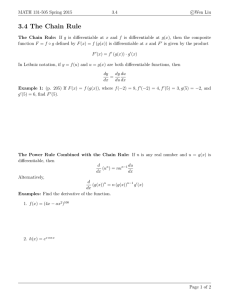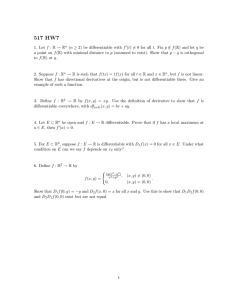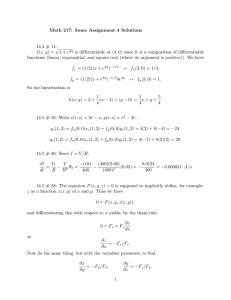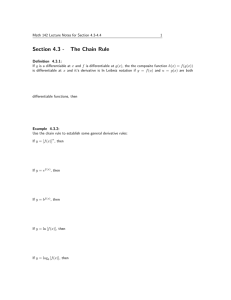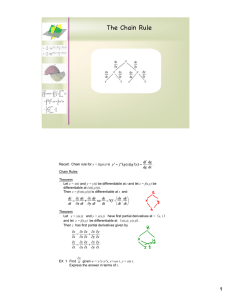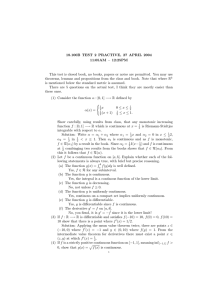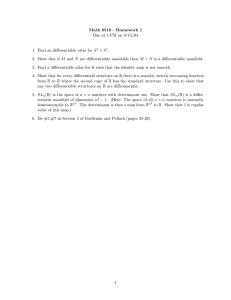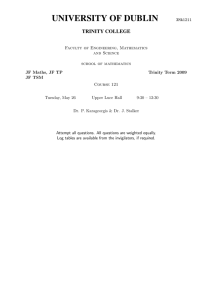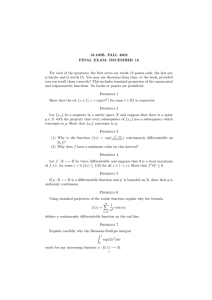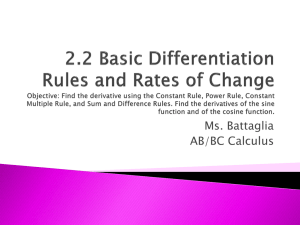Document 10434897
advertisement
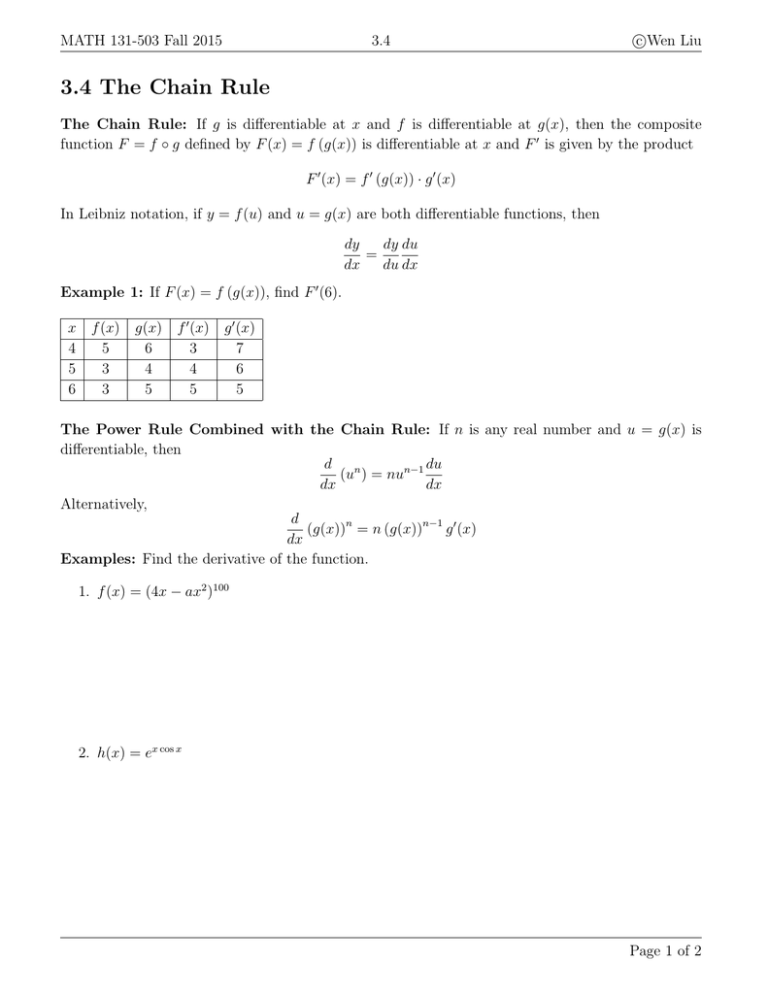
MATH 131-503 Fall 2015 3.4 c Wen Liu 3.4 The Chain Rule The Chain Rule: If g is differentiable at x and f is differentiable at g(x), then the composite function F = f ◦ g defined by F (x) = f (g(x)) is differentiable at x and F 0 is given by the product F 0 (x) = f 0 (g(x)) · g 0 (x) In Leibniz notation, if y = f (u) and u = g(x) are both differentiable functions, then dy dy du = dx du dx Example 1: If F (x) = f (g(x)), find F 0 (6). x f (x) 4 5 5 3 6 3 g(x) 6 4 5 f 0 (x) g 0 (x) 3 7 4 6 5 5 The Power Rule Combined with the Chain Rule: If n is any real number and u = g(x) is differentiable, then du d n (u ) = nun−1 dx dx Alternatively, d (g(x))n = n (g(x))n−1 g 0 (x) dx Examples: Find the derivative of the function. 1. f (x) = (4x − ax2 )100 2. h(x) = ex cos x Page 1 of 2 MATH 131-503 Fall 2015 r 3. g(x) = 3 t2 3.4 c Wen Liu t +4 4. y = (2x − 5)4 (8x2 − 5)−3 5. y = cos(a3 + x3 ) Note: d x (a ) = ax ln a dx Example 6: Find f 0 if f (x) = 43c sin(πx) for some constant c > 0. Page 2 of 2
